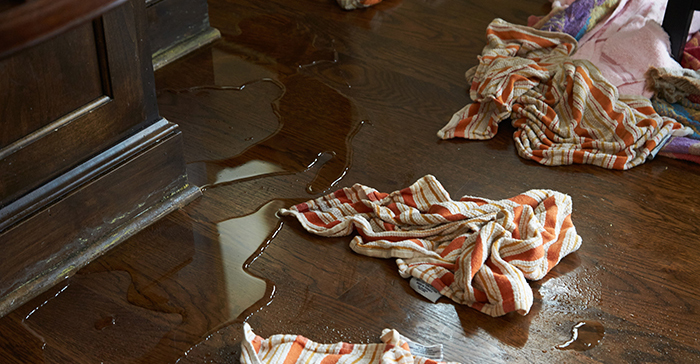How to avoid a Water Damaged Bathroom
How to avoid a Water Damaged Bathroom
Blog Article
How do you really feel with regards to Preventing Water Damage in the Bathroom?

The shower room is exceptionally vulnerable for damp accumulation as well as prospective water damage because of the regular use water in it. This post supplies straightforward inspection techniques to help identifying water damage dangers.
The regular use water in the washroom makes it very at risk for wet buildup and also possible water damages. By evaluating it on a regular basis, you can lower water relevant damages.
The following set of inspections is very easy to execute as well as ought to be done once in every 3 months in order to maintain your washroom healthy as well as to avoid possible water problems triggered by the tub, the shower, pipe joints and plumbing, sinks, cabinets, and also the bathroom
Do not disregard carrying out these inspections and also be complete while doing them. Bear in mind that these simple inspections can conserve you a great deal of cash by supplying early indications for water damages
Sinks as well as Cabinets
Sinks and closets are revealed to wetness and also moisture day-to-day and also are usually forgotten. Check on a regular basis under the sink as well as on the countertop above it. Repair any kind of drip in the catch as it might recommend drain issues. Take a look around the sink, slow draining pipes might show an obstructed drain. Replace sink seals if they are cracked or loose.
Bath tub and also Shower
The shower as well as tub require special focus and also upkeep. Inspect the tiles and change if split. Ensure that there is no missing cement in between the ceramic tiles. Examine and change split caulking at joints where the walls meet the flooring or the tub. Clogged drains pipes and also pipes problems will certainly stop the tub from drying and also may show major troubles underneath the bathtub. Talk to a professional quickly to avoid architectural damage. Pay attention to discolorations or soft locations around the tub wall surfaces as they might show an internal leakage.
Plumbing
Signs for water damages are difficult to find since many pipelines are installed inside the walls.
Pay unique attention to flooring as well as walls wetness and also stains as they might indicate an undetectable plumbing trouble. Check dampness levels in adjacent rooms also.
The Commode
The commode is a susceptible water junction. Examine the water lines and look for leakages around the toilet seat, in the pipe, and also under the water tank. If you find any indications of moisture on the flooring around the commode, check for leakages in the toilet rim as well as container seals.
Be aware that hanging toilet dish antiperspirants increases the possibilities for blockages.
Water Damage Signs In The Bathroom To Avoid Cleanup
Musty smell
This is one of the easiest signs to catch because musty smells are so odorous. The damp, earthy, moldy smell should be a big red flag. The smell will develop when moisture gets trapped in surfaces, and begins to facilitate mold growth. Leaking pipes under cabinets, inside walls, and behind shower fixtures will cause moisture to stay trapped and not dry, which will lead to mold growth and spread. As soon as you notice any musty smells in your bathroom, have it checked for hidden water damage and cleanup signs.
Visible mold
If the smell isn’t there to give it away, sometimes you will actually see mold growth. Finding mold in your bathroom is a serious problem, because mold is very harmful to your health. By the time mold growth is visible, it also means that water damage has already occurred and been present for some time. The only way the mold problem can be resolved is to find the source of the moisture and get it stopped. To safely and adequately remove mold, you need to have professionals handle the remediation. Do not waste any time in getting mold problems addressed, fixed, and sanitized so that you can protect you and your family from the many respiratory symptoms caused by mold exposure.
Damaged floors
Bathroom floors should be able to withstand some exposure to water while still remaining in good condition. However, when excess exposure or water leaks occur, they will begin to damage even the most water-resistant flooring. If you notice any cracking, bubbling, staining, or warping on your bathroom floors, there is probably a water leak somewhere causing the distortion. If you notice areas of the floor have become softer, or even have a spongy feeling, there is probably damage to the subfloor. Subflooring is typically made up of plywood. When plywood is exposed to water or moisture, it will absorb it. Once it has become saturated, the weight of the excess water will cause the wood to swell and soften. Check the floors in your bathroom frequently to catch any of these sings before they lead to damaged subflooring.
Changes on walls
When water leaks behind walls, it will cause changes in the drywall. Peeling plaster, blistering paint, and soggy wallpaper are all good indicators that excess water is building up behind the wall. Water leaking behind drywall will cause it to swell and be soft to the tough. If you start to notice gaps along the trim of your walls, or where tile meets the wall, it could also be a strong indicator that there is a leak behind the wall. Any changes, distortion, or damage on the walls should be evaluated as soon as you notice it to prevent further water damage and cleanup.

I hope you enjoyed reading our part about How to Repair and Prevent Bathroom Water Damage. Thanks for taking time to read our article post. Sharing is caring. Helping others is fun. We truly appreciate reading our article about How to Repair and Prevent Bathroom Water Damage.
Visit Homepage Report this page